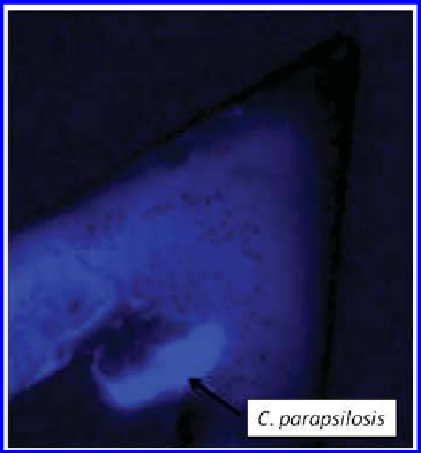Biology Reference
In-Depth Information
these molecules changes the surface to one easily colonized by microbes.
AFM has been used to measure the interaction of bacteria with biomaterials
for over 20 years, with an early study using a probe modiied with a lawn
of
to probe the interactions of that bacterium with a polymer-coated
substrate.
35
Methods have improved and become more facile, so that now it is
relatively easy to measure the interactions between a bacterium or a bioilm
and virtually any type of biomaterial.
The technique in which bacteria are attached to an AFM probe or to a
tipless cantilever is referred to as biological force microscopy and is an
extension of colloidal probe microscopy (CPM). Ducker
E. coli
developed CPM
in 1991, in which a colloidal sphere was glued to an AFM cantilever.
36,37
The
advantage of CPM is that the contact area between the sample and the probe
is much better deined than when a sharp probe is used, and therefore it is
easier to apply models that require the contact area.
The irst microbes used as biological probes were yeast, which are
generally larger and more round than bacteria, properties that probably
facilitated their attachment to the cantilever.
16
An example of a yeast cell
(
et al.
) attached to an AFM cantilever is shown in
Fig. 13.3
.
However, the methodologies developed for yeast were quickly extended
towards bacterial studies.
38-40
The advantage of using a biological force probe
is that any kind of substrate can be probed. Therefore, this technique has
potential to be used for the study of bacterial interactions with biomaterials.
Candida parapsilosis
Figure 13.3. A cell probe was created by attaching
C. parapsilosis
to a silicon nitride
AFM cantilever.

















Search WWH ::

Custom Search